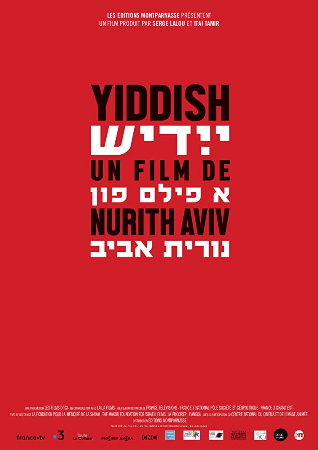
Yiddish 2020
Distributed by Icarus Films, 32 Court St., 21st Floor, Brooklyn, NY 11201; 800-876-1710
Produced by Serge Lalou and Itai Tamir
Directed by Nurith Aviv
Streaming, 61 mins
College
Judaism History; Language; Poetry
Date Entered: 06/30/2021
Reviewed by Amanda Jo Melchor, Reference & Instruction Librarian, Texas A&M University - KingsvilleYiddish is a thorough look at the Yiddish language during specific eras in twentieth century history, and touches on the influences of poets such as Moyshe-Leyb Halpern, Peretz Markish, Anna Margolin, Celia Dropkin, Avrom Sutzkever, Debora Vogel.
Yiddish’s strengths come from its expert interview subjects and specific language era focus. Speakers include a cross-section of professions: students, instructors, scholars, poets, translators, language researchers. This film, however, is not an overview of the language or its modern history. It’s focused specifically on the interwar and avant-garde eras. Viewers looking for a more introductory level of coverage and perspective may feel underinformed and overwhelmed.
The film is organized, and professional, but the static visuals and repetitive interview formats cause the documentary to feel long. Each interview subject discusses their relationship to Yiddish and their specific efforts with it, usually citing a Yiddish poet who was influential to them. The speaker’s sections end with them reading a poem by their preferred poet and the written poem appears briefly in written Yiddish and then translated to English on screen. Establishing shots show the vast varieties of speaker locations and underscore how far reaching the language was and is.
For instructional use, the specialized focus would probably appeal to more advanced students, including those studying Yiddish and those conducting interdisciplinary work with the subject. Audiences unfamiliar with the topic or the study of poetry and language might find it difficult to engage. Academic or subject libraries with a strong language or history program would see this as a rich resource.
The Yiddish language’s presence in global histories and cultures primes it as a rich topic for unique research viewpoints. The film also touches on Yiddish’s complicated relationship to Jewish identity and its status as a “people’s language” versus a formal one. Users interested in the language and its existence in the interwar and avant-garde areas will find much to enjoy about this unique film.
Published and licensed under the Creative Commons Attribution 4.0 license. Anyone can use these reviews, so long as they comply with the terms of the license.